Vertical training on trampolines greatly enhances your hand-eye coordination through multi-sensory engagement. Start with gentle bounces while catching balls at low heights, then gradually increase difficulty as your skills improve. Cross-body movements integrate both brain hemispheres, while rhythmic patterns sharpen your timing and spatial awareness. This playful approach delivers better skill retention than traditional drills. The combination of proprioception challenges and visual tracking creates lasting neurological pathways for sharper reflexes and precision.
Trampoline Bounce-and-Catch Fundamentals
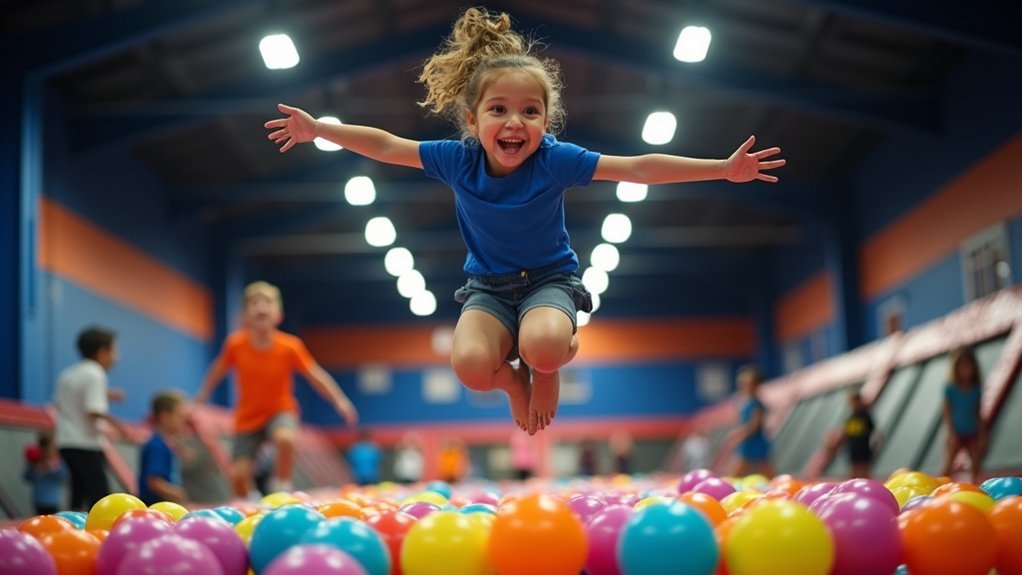
Bounce skyward on a trampoline while tracking a ball, and you’ll instantly activate multiple sensory systems in your brain. This dynamic exercise challenges your hand-eye coordination as you maintain body control during vertical movement while simultaneously focusing on a moving target.
You’ll notice your reflexes sharpening as you anticipate the ball’s trajectory and position your hands accordingly. The unstable surface forces your body to adjust its balance constantly, enhancing proprioception—your sense of body position in space.
Start with gentle bounces and slow tosses, then progressively increase difficulty by jumping higher or throwing faster. This scalable approach guarantees continuous improvement as your skills develop.
The playful nature of bounce-and-catch keeps you engaged, leading to better skill retention than traditional coordination drills.
Mastering Vertical Tracking Through Rebounding
While tracking objects horizontally challenges your peripheral vision, mastering vertical tracking through rebounding elevates your hand-eye coordination to new heights.
Vertical tracking enhances spatial awareness and reaction precision that horizontal drills simply cannot match.
As you practice judging the ball’s trajectory during rebound exercises, you’ll develop essential spatial awareness that transfers directly to gameplay.
Incorporate drills that send the ball back and forth at varying heights to enhance your visual sharpness. Your brain will learn to quickly assess flight paths while coordinating precise body movements to secure the ball.
This dynamic training improves not just catching ability but also reaction times and opponent anticipation.
Challenge yourself by progressively increasing both the speed and height of rebounds. The constant adjustment required during these exercises sharpens your visual processing, ultimately translating to better performance when split-second decisions matter most.
Progressive Height Challenges for Reflex Training
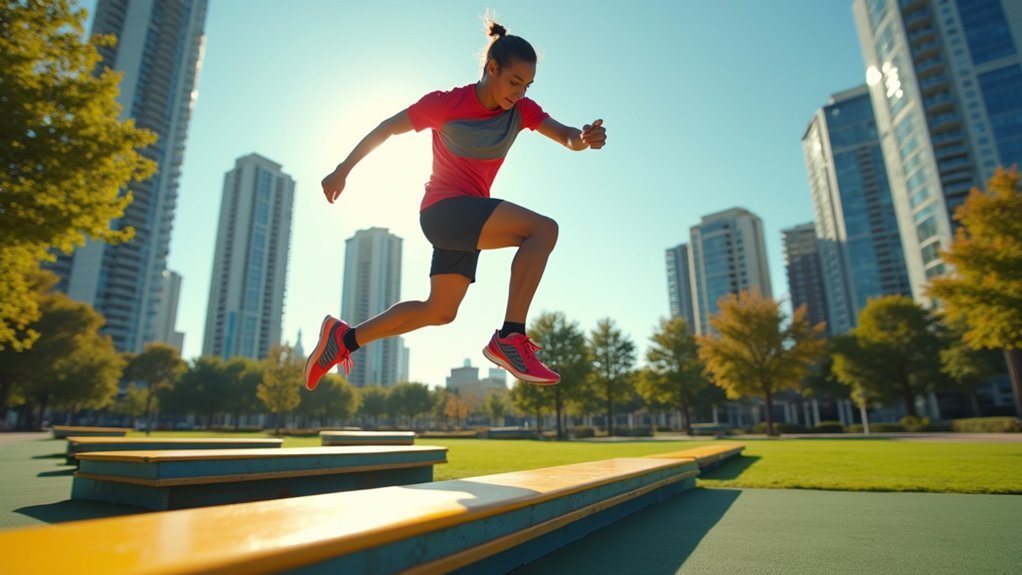
Progressive height challenges build upon rebound training by introducing a powerful reflex-training dimension to your practice routine.
Start with a comfortable low height, allowing you to establish precision and confidence before gradually increasing the distance. This systematic progression is one of the key principles that makes this exercise so effective.
As you master each level, introduce variations by changing ball sizes or drop speeds to engage different muscle groups and cognitive functions.
You’ll notice your prediction skills improving naturally as your body learns to anticipate trajectories and adjust accordingly.
Set specific height goals to track your progress—perhaps aiming to successfully catch from a half-meter higher within two weeks.
This measurable approach keeps you motivated while your neural pathways strengthen, delivering noticeable improvements in your hand-eye coordination.
Cross-Body Coordination Drills on Mini Trampolines
Integrating both hemispheres of your brain becomes remarkably effective when you practice cross-body coordination drills on a mini trampoline. As you jump and reach opposite hands to feet, you’ll notice your proprioception and spatial awareness dramatically improve.
Unleash your brain’s full potential through cross-body movements that transform coordination while bouncing your way to better spatial awareness.
Watch the ball while performing these movements to further enhance your visual tracking abilities and synchronize them with cross-midline movements.
- Try rhythmic jumping patterns while tossing a ball from hand to hand across your body to boost coordination complexity.
- Gradually increase your jumping speed while maintaining focus on the ball to develop quicker reflexes.
- Alternate between high and low bounces while touching opposite knees or shoulders to maximize proprioceptive benefits.
These exercises considerably enhance athletic performance by training your brain to anticipate movements more effectively, leading to sharper hand-eye coordination and improved balance.
Rhythmic Pattern Exercises for Advanced Skill Development
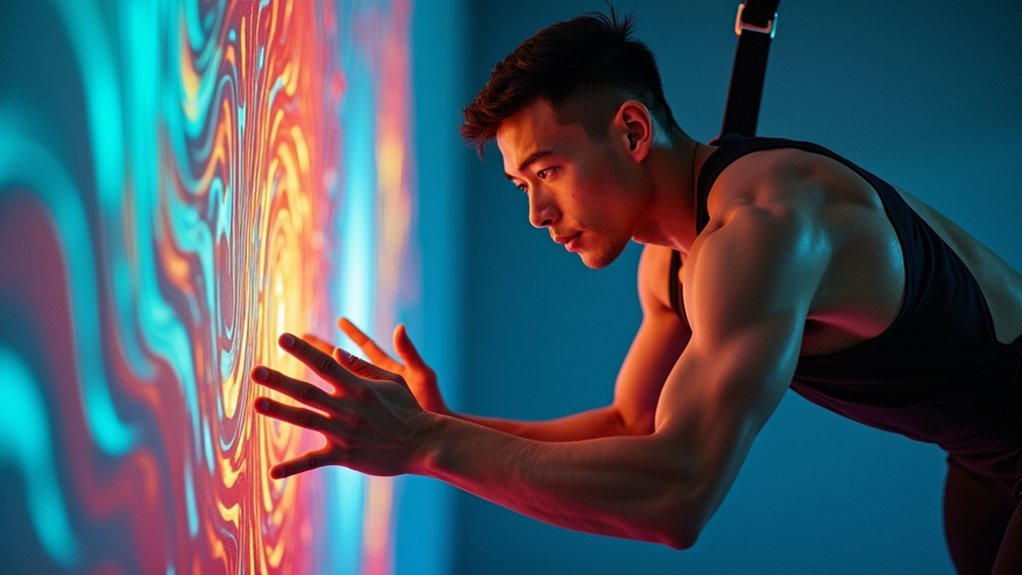
Rhythmic pattern exercises take your hand-eye coordination to even more advanced levels once you’ve mastered trampoline drills. These activities challenge your brain to process visual stimuli while maintaining consistent timing, greatly improving your movement accuracy.
Start with simple clapping or drumming sequences, then progress to rhythm-based apps that increase in complexity. By practicing at varying speeds, you’ll enhance your brain’s adaptability and promote neuroplasticity—the key to lasting coordination improvements.
You’ll notice these benefits extending to your daily activities as your reaction times improve and your brain learns to anticipate movements more effectively.
Regular practice also enhances proprioception, giving you better awareness of your body’s position in space. This thorough approach builds advanced coordination skills that serve you in sports and everyday tasks.
Frequently Asked Questions
How Can I Sharpen My Hand-Eye Coordination?
You’ll improve hand-eye coordination by playing racquet sports, practicing Tai Chi, juggling, or playing catch regularly. Start with easier modifications like larger balls, then gradually increase difficulty as your skills develop.
Is It Possible to Train Hand-Eye Coordination?
Yes, you can definitely train your hand-eye coordination. Through regular practice of activities like racquet sports, swimming, and targeted drills, you’ll see significant improvements in your visual processing and motor skills over time.
What Causes Poor Hand-Eye Coordination?
Poor hand-eye coordination can result from aging, neurological issues, lack of practice, cognitive decline, or medical conditions like ministrokes. You’ll notice diminished reflexes, accuracy, and visual processing when your brain’s coordination pathways become compromised.
Is Hand-Eye Coordination Genetic or Learned?
Hand-eye coordination is primarily learned, though genetics may provide a foundation. You’ll develop better coordination through practice and experience. Your neural pathways strengthen with repetition, allowing you to improve regardless of your genetic predisposition.
In Summary
You’ve now got the tools to transform your hand-eye coordination through vertical training. By incorporating trampoline drills into your routine, you’re challenging your visual tracking in ways horizontal exercises can’t match. Start with simple bounce-and-catch patterns, then build to more complex cross-body movements and rhythmic sequences. As you progress through increasing heights, you’ll develop lightning-fast reflexes that transfer to your sport or daily activities.

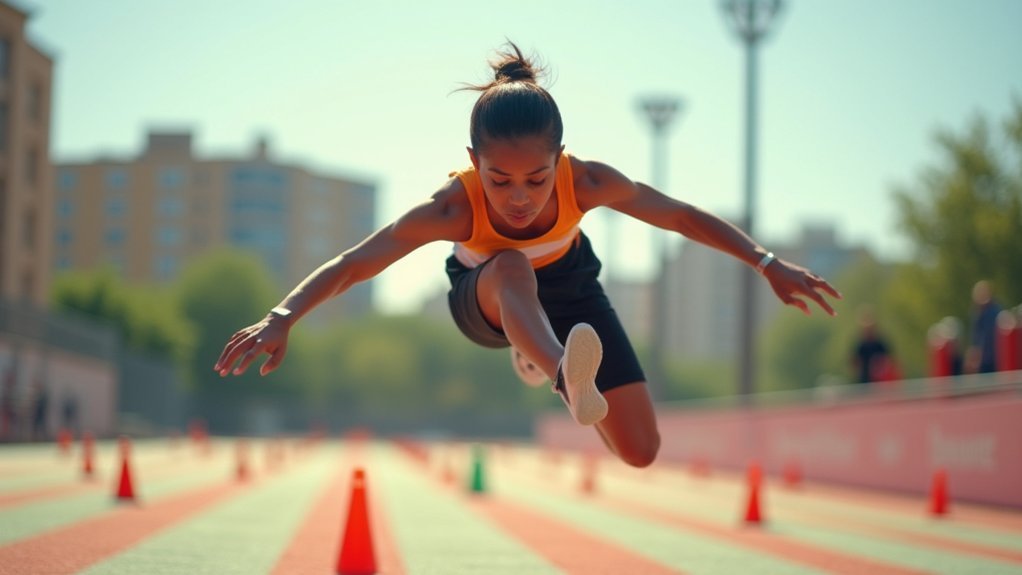

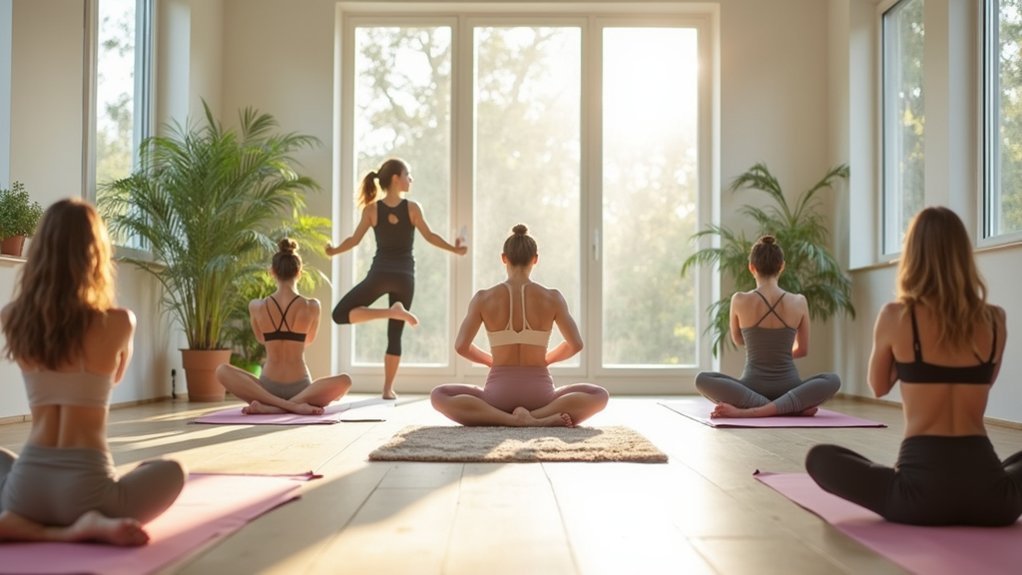

Leave a Reply